Op dezelfde dag dat in Arnhem onze koning Sonsbeek 16 opende, was er ook een feestje rond de Phoenixsee in Dortmund. Daar opende namelijk Emscherkunst 2016, en voor wie daar nog nooit van gehoord heeft: het is de voortzetting van eerdere kunstmanifestaties in het Ruhrgebied, het voormalige industriehart van Europa. Ik ben er zelf al een keer wezen kijken, 6 jaar geleden, en had gemengde gevoelens: is het investeren in kunst werkelijk een geschikte methode om een door de economie in de steek gelaten gebied te redden? Kan de creatieve klasse er in zijn eentje voor zorgen dat de economie van een stad weer op orde komt, en vooral: hoe zorg je voor meer kapitaalkrachtige inwoners die de lokale ondernemers weer tot klant kunnen dienen?
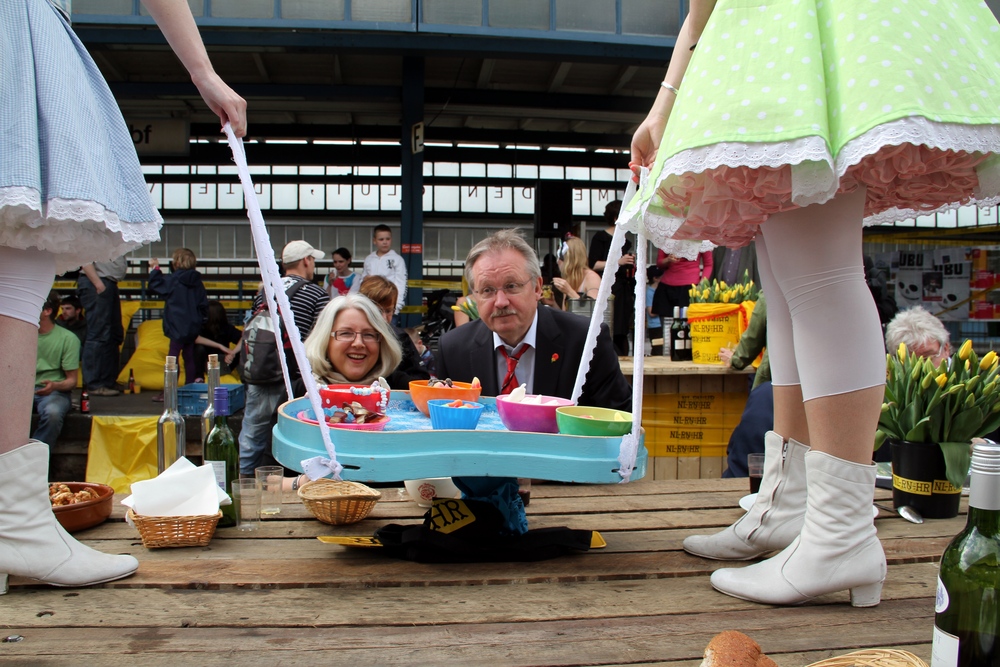
Nu, zes jaar later, was ik benieuwd of het project enige vooruitgang had weten te boeken. De kunstmanifestatie heeft zich voor de komende honderd dagen verplaatst naar de bovenloop van de Emscher. Het riviertje is hier niet veel meer dan een kaarsrecht gekanaliseerde beek, maar omdat in de bovenloop de riolering inmiddels is afgekoppeld van de rivier, is het water helder en op termijn zelfs mogelijk drinkbaar. Dat is, als je de rivier kunt vinden.
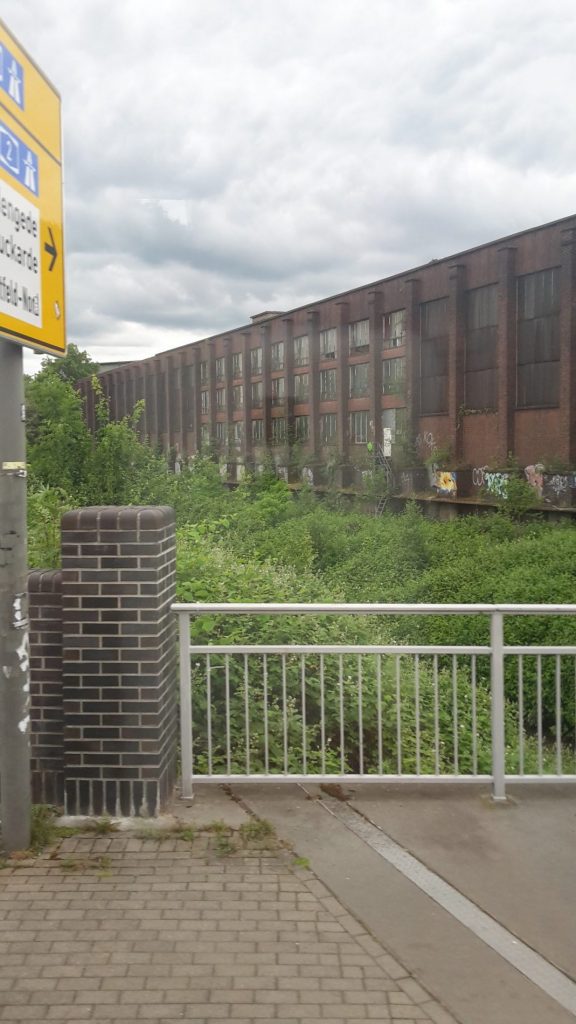
De het terugbrengen van de natuur in de afgelopen jaren heeft namelijk vooral gezorgd voor een boel ondoordringbaar struikgewas rond de rivier, die nu een poging mag doen om vrij te meanderen in een groenstrook tussen snelwegen, geluidswallen en oude industriegebouwen in. Hoog tijd dus voor twee dingen: een fietspad en een paar goed gemikte kunstwerken over een lengte van in totaal vijfenzeventig kilometer van Dortmund-Oost naar Dortmund-West. Of van de beladen kunstcamping van Ai Wei Wei via de houten B&B ‘Warten auf der Fluss’ van het Nederlandse kunstenaarsinitiatief Observatiorium naar de Waste Water Fountain van de Deense kunstenaarsgroep Superflex.

Ergens bij het begin van de route tref je de Phoenixsee, en dit meer heeft een bijzondere geschiedenis. De recreatievijver is namelijk het resultaat van de afgraving van het terrein van een van de grootste staalfabrieken van het Ruhrgebied, de Phoenix. Dit vele hectaren grote fabrieksterrein is in zijn geheel afgebroken en overgeplaatst naar China, waar de verouderde fabriek nu weer gewoon dienst doet als werkgever voor de talloze staalarbeiders die hun zware en gevaarlijke werk heel wat goedkoper doen dan de Duitsers.
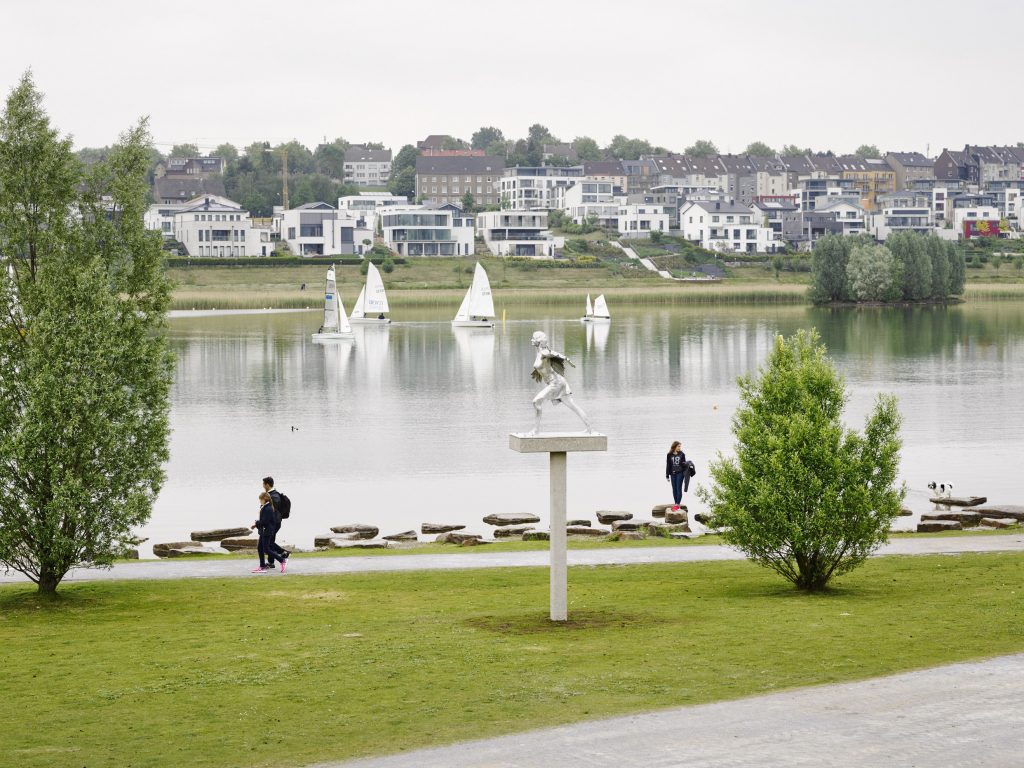
Nu rest er een lieflijk meer met jachthaven, omgeven door een promenade en chique villa’s, die in het kader van de noodzakelijke gentrification in het gebied zijn neergezet. Die gentrificatie is dus zo nodig omdat het Roergebied zonder rijke inwoners er economisch helemaal niet meer bovenop komt. Vandaar dus ook die kunst. Nu wil het dus met die gentrificatie niet heel erg lukken, daar in Dortmund Oost. Veel panden staan nog leeg, en wat opvallender is: in plaats van rijke, ruimdenkende creatievelingen met oog voor vernieuwende cultuur loopt de villawijk vol met burgers van het meer conservatieve soort. En dat zorgt voor interessante conflicten.
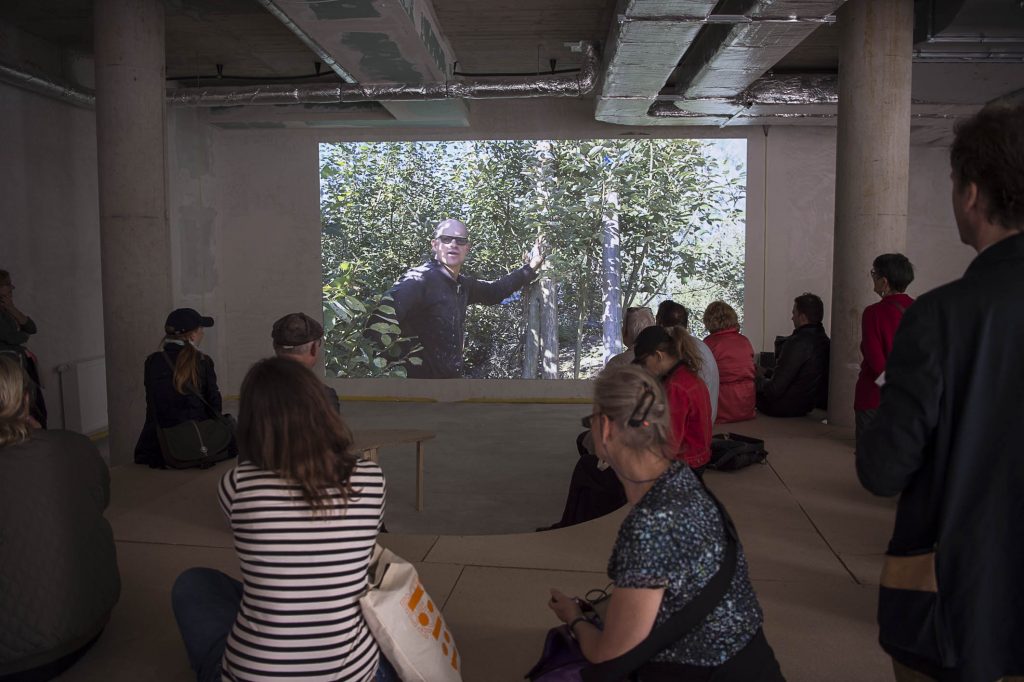
Logisch ook, want dat gebeurt nu eenmaal als je Erik van Lieshout een half jaar zijn gang laat gaan op een onbewoond eiland in het nieuwe meertje. Deze Brabantse kunstenaar heeft van ontregelen zijn handelsmerk gemaakt, dus kon je erop wachten dat er boze brieven en acties zouden komen, om de vrolijke chaoot van het eiland te verwijderen. Dat begon allemaal met een door hem in elkaar gehannest monumentje voor naamloze berberstrijders. ‘Verheerlijking van geweld’, constateerde een voorbijganger, en het project werd bijna gestaakt. Van Lieshout zelf is inmiddels klaar met zijn werk. Het eiland is weer keurig hersteld en we kunnen in een van de leegstaande winkelruimtes bij het meer kijken naar zijn filmische verslag. Hilarisch, natuurlijk, maar in zijn eentje net niet genoeg om u naar Dortmund te sturen.
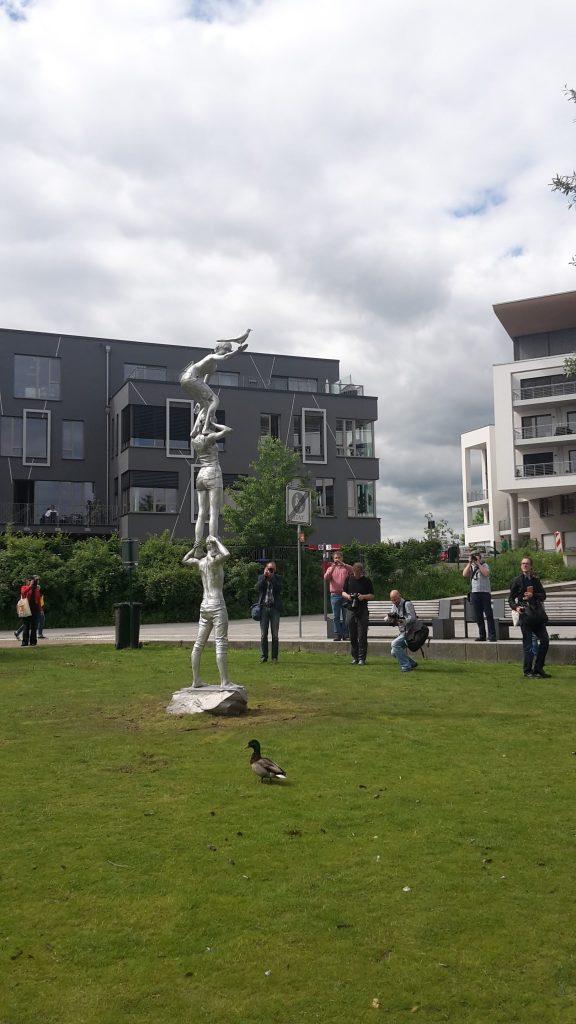
Wel interessant is het om te zien welke kunst de burgers van de Phoenixsee dan wel willen hebben: hyperrealistische gloriebeelden van een rondborstige vrouw met vleugels, in zilverkleur, en even verderop frisse westerse kindertjes in een al even glorieuze pose op elkaars schouders, waarbij een symbolische duif net van de hand van de bovenste opstijgt. Dit werk is het resultaat van uitgebreide enquetes en gesprekken met omwonenden door de kunstenaars Lucy en Jorge Orta: community art, maar dan in een tikje angstaanjagende vorm. Dit is wat er gebeurt als je burgers laat bepalen welke kunst er in hun achtertuin komt.
Dat vond in ieder geval Massimo Bartolini, wiens werk ‘Black Circle Square’ bij het Hochwasserrückhaltebecken nog niet af is, wegens gedoe met vergunningen. Hij ging bij zijn toelichting op de bouwplaats, die uiteindelijk een combinatie moet worden van een bluswaterreservoir en een verbeeldhouwde versie van Malevitsj’ schilderij ‘Zwarte Cirkel’, flink tekeer tegen inspraakkunst die volgens hem alleen maar kon leiden tot fascistoïde megalomanie. Voor abstractie heb je een ruime geest nodig, en die ontbreekt volgens de Italiaan in de regio.
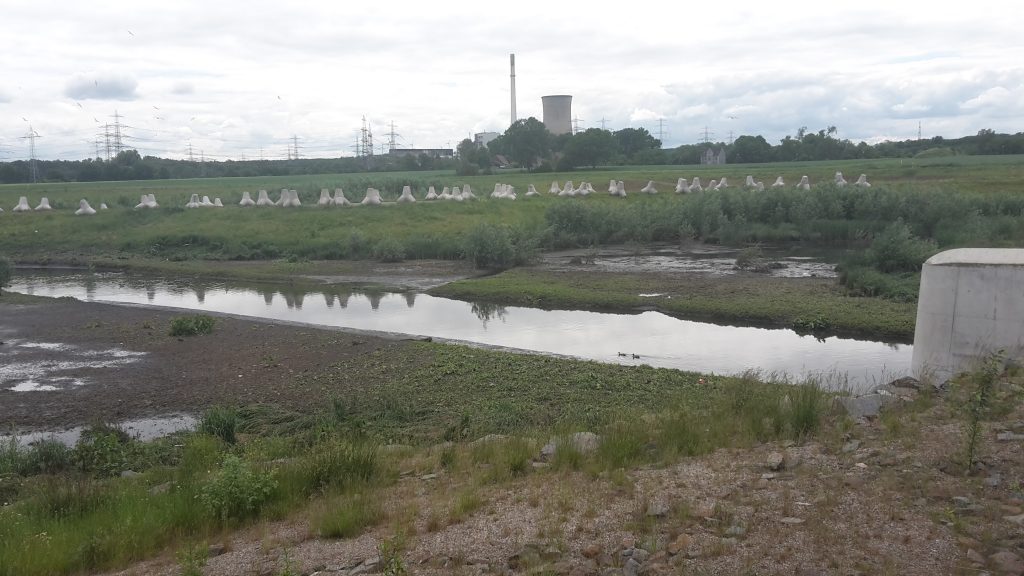
Ik zag al deze werken op een voorpremière, in het gezelschap van een dertigtal journalisten. Deze dertig journalisten werden van kunstwerk naar kunstwerk vervoerd in bussen, die steeds weer van plek naar plek reden over de talloze snelwegen en autowegen die het Ruhrgebied doorkruisen. Lange tochten door de saaie eentonigheid van het meest verstedelijkte gebied van Duitsland, tussen geluidswallen en van non-descript wijkje naar non-descript buurtje. En dat allemaal omdat dat hele Emschergebied natuurlijk maar een strook is van twee- tot driehonderd meter breed. Honderd jaar lang was dit een stinkend riool dat je het liefst zo ver mogelijk uit het zicht hield. De uitdaging om dit te veranderen in een aantrekkelijk rivierlandschap is enorm.
De fiets gaat echter uitkomst bieden. Langs diverse stukken van de rivierloop is al een fietsroute aangelegd, en de organisatie van Emscherkunst stelt ook leenfietsen ter beschikking voor de bezoekers. Het pad is een belangrijke reden om er echt eens te gaan kijken. Doordat de Emscher zo buiten de bebouwing is gelaten, lijkt het of je door de vrije natuur fietst, terwijl de grote stad nooit verder dan enkele tientallen meters van je verwijderd is. Alleen op de fiets ontdek je dus de waarde van dat hernaturaliseringsproject, alleen op de fiets kun je je echt verbazen over de kunstwerken.
De wereld wacht op het rustige tempo van de fiets, en waar is dat nou leuker om te beleven dan in een gebied dat bijna veranderd is in het Detroit van Europa?
